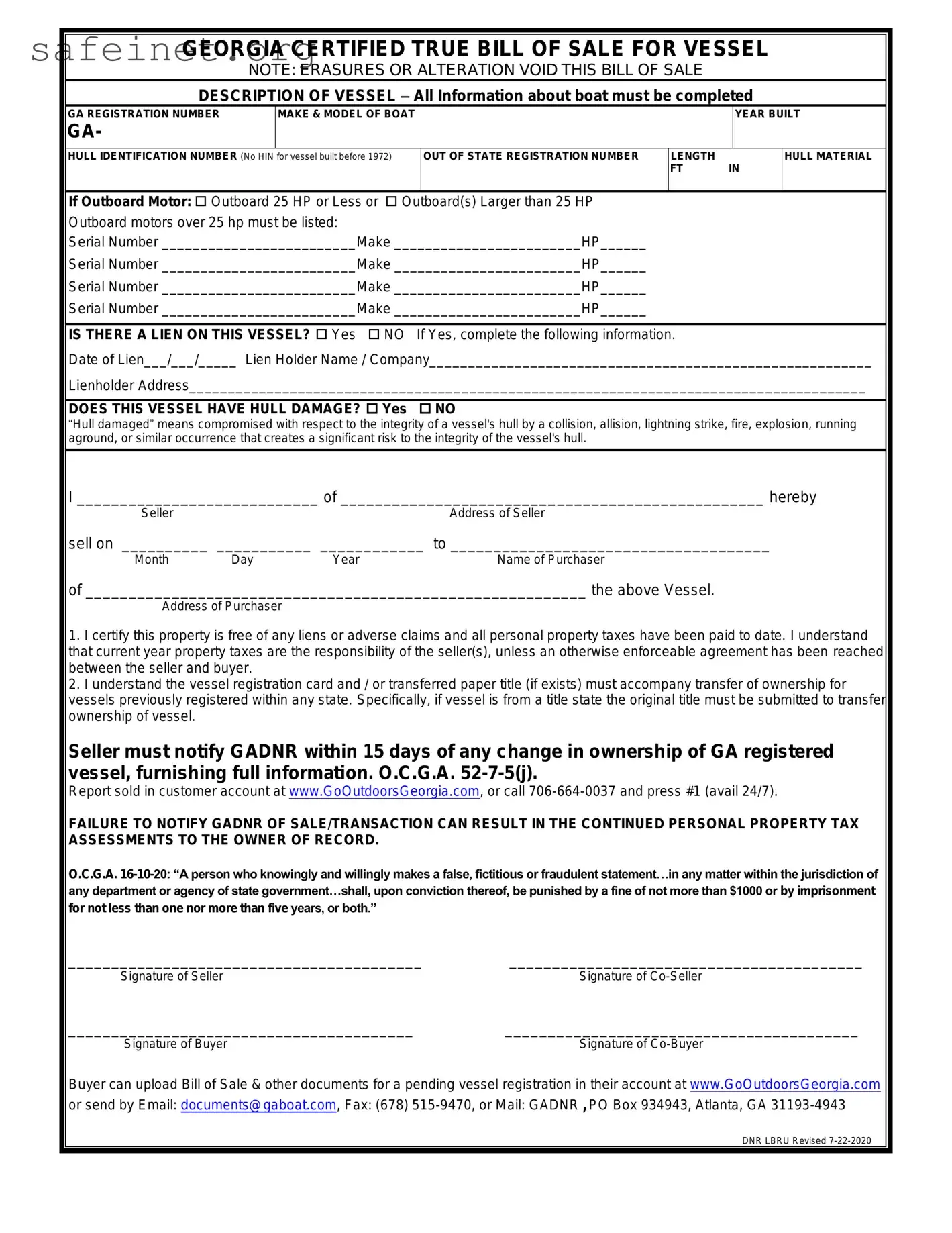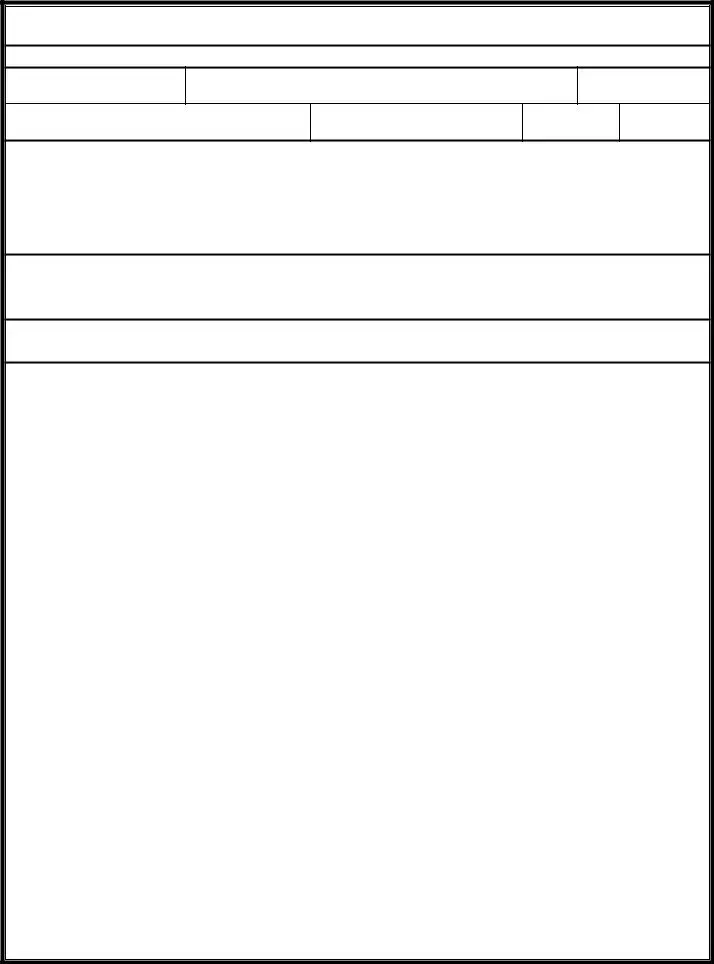If Outboard Motor: Outboard 25 HP or Less or Outboard(s) Larger than 25 HP
Outboard motors over 25 hp must be listed:
Serial Number _________________________Make ________________________HP______
Serial Number _________________________Make ________________________HP______
Serial Number _________________________Make ________________________HP______
Serial Number _________________________Make ________________________HP______
IS THERE A LIEN ON THIS VESSEL? Yes NO If Yes, complete the following information.
Date of Lien___/___/_____ Lien Holder Name / Company_________________________________________________________
Lienholder Address_______________________________________________________________________________________
DOES THIS VESSEL HAVE HULL DAMAGE? Yes NO
“Hull damaged” means compromised with respect to the integrity of a vessel's hull by a collision, allision, lightning strike, fire, explosion, running aground, or similar occurrence that creates a significant risk to the integrity of the vessel's hull.
I ____________________________ of _________________________________________________ hereby
SellerAddress of Seller
sell on __________ ___________ ____________ to _____________________________________
MonthDayYearName of Purchaser
of __________________________________________________________ the above Vessel.
Address of Purchaser
1.I certify this property is free of any liens or adverse claims and all personal property taxes have been paid to date. I understand
that current year property taxes are the responsibility of the seller(s), unless an otherwise enforceable agreement has been reached between the seller and buyer.
2.I understand the vessel registration card and / or transferred paper title (if exists) must accompany transfer of ownership for vessels previously registered within any state. Specifically, if vessel is from a title state the original title must be submitted to transfer ownership of vessel.
Seller must notify GADNR within 15 days of any change in ownership of GA registered vessel, furnishing full information. O.C.G.A. 52-7-5(j).
Report sold in customer account at www.GoOutdoorsGeorgia.com, or call 706-664-0037 and press #1 (avail 24/7).
FAILURE TO NOTIFY GADNR OF SALE/TRANSACTION CAN RESULT IN THE CONTINUED PERSONAL PROPERTY TAX ASSESSMENTS TO THE OWNER OF RECORD.
O.C.G.A. 16-10-20: “A person who knowingly and willingly makes a false, fictitious or fraudulent statement…in any matter within the jurisdiction of any department or agency of state government…shall, upon conviction thereof, be punished by a fine of not more than $1000 or by imprisonment for not less than one nor more than five years, or both.”
_________________________________________ |
_________________________________________ |
Signature of Seller |
Signature of Co-Seller |
________________________________________ |
_________________________________________ |
Signature of Buyer |
Signature of Co-Buyer |
Buyer can upload Bill of Sale & other documents for a pending vessel registration in their account at www.GoOutdoorsGeorgia.com or send by Email: [email protected], Fax: (678) 515-9470, or Mail: GADNR, PO Box 934943, Atlanta, GA 31193-4943
DNR LBRU Revised 7-22-2020

